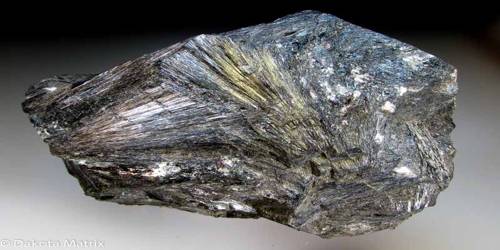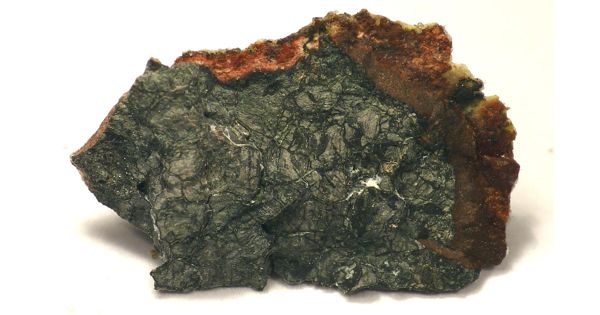Cummingtonite is a metamorphic amphibole with the chemical composition (Mg, Fe2+)2(Mg, Fe2+)5 Si8O22 (OH)2, magnesium iron silicate hydroxide. It is an amphibole mineral, an iron and magnesium silicate that occurs in metamorphic rocks. It is an important mineral which is also recognized as a middle member of the series of minerals by the same name. These series includes magnesio cummingtonite and grunerite.
It was named after the town of Cummington, Massachusetts, where it was discovered in 1824. It is also found in Sweden, South Africa, Scotland, and New Zealand.
General Information
- Category: Inosilicate
- Formula: (Mg,Fe2+)2(Mg,Fe2+)5Si8O22(OH)2
- Crystal system: Monoclinic
- Crystal class: Prismatic (2/m)
- Space group: Monoclinic
- Space group: C2/m
Monoclinic cummingtonite is compositionally similar and polymorphic with orthorhombic anthophyllite, which is a much more common form of magnesium-rich amphibole, the latter being metastable.

Properties
Cummingtonite shares few compositional similarities with alkali amphiboles such as arfvedsonite, glaucophane-riebeckite. There is little solubility between these minerals due to different crystal habit and inability of substitution between alkali elements and ferromagnesian elements within the amphibole structure.
- Color: Dark green, brown, gray, beige; colorless to pale green in thin section
- Crystal habit: Rarely as distinct crystals. Columnar to fibrous and granular
- Cleavage: Good on {110} intersecting at 54 and 126°
- Fracture: Splintery
- Tenacity: Brittle
- Mohs scale hardness: 5–6
- Luster: Vitreous to silky
- Diaphaneity: Translucent, will transmit light on thin edges.
- Specific gravity: 3.1–3.6
Occurrence
Cummingtonite is commonly found in metamorphosed magnesium-rich rocks and occurs in amphibolites. Usually, it coexists with hornblende or actinolite, magnesium clinochlore chlorite, talc, serpentine-antigorite minerals or metamorphic pyroxene. Magnesium-rich cummingtonite can also coexist with anthophyllite.
Cummingtonite has also been found in some felsic volcanic rocks such as dacites. Manganese-rich species can be found in metamorphosed Mn-rich rock units. The grunerite end member is characteristic of the metamorphosed iron formations of the Lake Superior region and the Labrador Trough. With prograde metamorphism cummingtonite and grunerite morph to members of the olivine and pyroxene series.
Information Source:
















